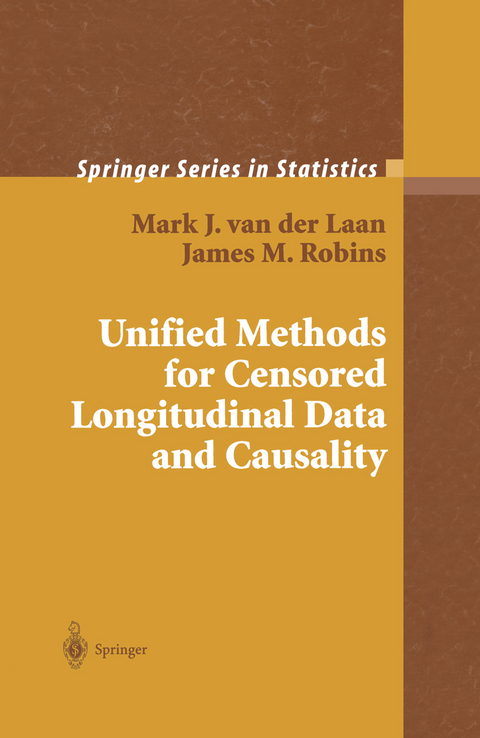
Unified Methods for Censored Longitudinal Data and Causality
Springer-Verlag New York Inc.
978-0-387-95556-8 (ISBN)
1 Introduction.- 1.1 Motivation, Bibliographic History, and an Overview of the book.- 1.2 Tour through the General Estimation Problem.- 1.3 Example: Causal Effect of Air Pollution on Short-Term Asthma Response.- 1.4 Estimating Functions.- 1.5 Robustness of Estimating Functions.- 1.6 Doubly robust estimation in censored data models.- 1.7 Using Cross-Validation to Select Nuisance Parameter Models.- 2 General Methodology.- 2.1 The General Model and Overview.- 2.2 Full Data Estimating Functions.- 2.3 Mapping into Observed Data Estimating Functions.- 2.4 Optimal Mapping into Observed Data Estimating Functions.- 2.5 Guaranteed Improvement Relative to an Initial Estimating Function.- 2.6 Construction of Confidence Intervals.- 2.7 Asymptotics of the One-Step Estimator.- 2.8 The Optimal Index.- 2.9 Estimation of the Optimal Index.- 2.10 Locally Efficient Estimation with Score-Operator Representation.- 3 Monotone Censored Data.- 3.1 Data Structure and Model.- 3.2 Examples.- 3.3 Inverse Probability Censoring Weighted (IPCW) Estimators.- 3.4 Optimal Mapping into Estimating Functions.- 3.5 Estimation of Q.- 3.6 Estimation of the Optimal Index.- 3.7 Multivariate failure time regression model.- 3.8 Simulation and data analysis for the nonparametric full data model.- 3.9 Rigorous Analysis of a Bivariate Survival Estimate.- 3.10 Prediction of Survival.- 4 Cross-Sectional Data and Right-Censored Data Combined.- 4.1 Model and General Data Structure.- 4.2 Cause Specific Monitoring Schemes.- 4.3 The Optimal Mapping into Observed Data Estimating Functions.- 4.4 Estimation of the Optimal Index in the MGLM.- 4.5 Example: Current Status Data with Time-Dependent Covariates.- 4.6 Example: Current Status Data on a Process Until Death.- 5 Multivariate Right-Censored Multivariate Data.- 5.1 GeneralData Structure.- 5.2 Mapping into Observed Data Estimating Functions..- 5.3 Bivariate Right-Censored Failure Time Data.- 6 Unified Approach for Causal Inference and Censored Data.- 6.1 General Model and Method of Estimation.- 6.2 Causal Inference with Marginal Structural Models.- 6.3 Double Robustness in Point Treatment MSM.- 6.4 Marginal Structural Model with Right-Censoring..- 6.5 Structural Nested Model with Right-Censoring.- 6.6 Right-Censoring with Missingness..- 6.7 Interval Censored Data.- References.- Author index.- Example index.
| Erscheint lt. Verlag | 14.1.2003 |
|---|---|
| Reihe/Serie | Springer Series in Statistics |
| Zusatzinfo | 2 Illustrations, black and white; XII, 399 p. 2 illus. |
| Verlagsort | New York, NY |
| Sprache | englisch |
| Maße | 155 x 235 mm |
| Themenwelt | Informatik ► Datenbanken ► Data Warehouse / Data Mining |
| Mathematik / Informatik ► Mathematik ► Wahrscheinlichkeit / Kombinatorik | |
| Studium ► Querschnittsbereiche ► Epidemiologie / Med. Biometrie | |
| ISBN-10 | 0-387-95556-9 / 0387955569 |
| ISBN-13 | 978-0-387-95556-8 / 9780387955568 |
| Zustand | Neuware |
| Haben Sie eine Frage zum Produkt? |
aus dem Bereich


